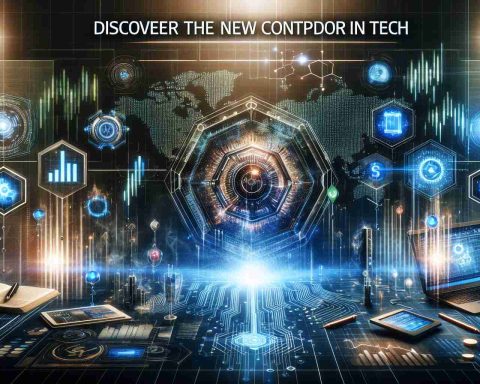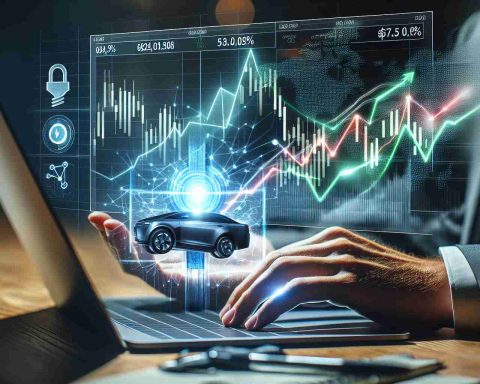The Ongoing Scrutiny of Tesla’s Autonomous Technology
The National Highway Traffic Safety Administration (NHTSA) is set to continue its investigation into Tesla’s Full Self Driving (FSD) technology, even as a new administration takes office. The inquiry looks into incidents involving the FSD software, which has affected approximately 2.4 million vehicles.
Currently, the examination is focusing on several serious collisions linked to the FSD system, which has been attributed to at least one fatality and an injury involving a pedestrian. These harrowing events have prompted the NHTSA to take a closer look to ensure the safety of autonomous driving technologies.
As part of this ongoing investigation, the NHTSA announced an additional probe into accidents associated with Tesla’s Actually Smart Summon feature. This expansion of the investigation indicates growing concerns regarding the reliability and safety of Tesla’s autonomous features.
Despite the political change, Sean Duffy, named as the upcoming Department of Transportation head under President Trump, has expressed his commitment to allowing the NHTSA to carry out its investigation thoroughly. The implications of these investigations could shape the future of autonomous driving regulations and Tesla’s operational protocols.
As authorities delve deeper into the matter, the focus remains on consumer safety and accountability in the rapidly advancing world of self-driving technology.
Broader Implications of Tesla’s Autonomous Technology Scrutiny
The ongoing investigation into Tesla’s Full Self Driving (FSD) technology raises pivotal questions that extend beyond the realm of automotive innovation; it fundamentally challenges our societal norms, cultural perceptions, and global economic structures. As autonomous technology continues to evolve, its foundational impact on mobility, urban planning, and jobs cannot be overstated.
From a societal perspective, the scrutiny surrounding Tesla’s FSD invites a reevaluation of the safety protocols associated with autonomous vehicles. High-profile incidents create an environment of skepticism and demand for rigorous standards, potentially influencing public trust. If autonomous technologies are perceived as hazardous, the broader adoption of such innovations could stall, impacting automotive sales and tech industry investments.
Environmentally, while autonomous vehicles promise reductions in traffic congestion and emissions, the path to these benefits is fraught with challenges. Increased reliance on automation could lead to greater vehicle miles traveled, undermining sustainability goals. Future trends reveal a dichotomy: as urban centers evolve to integrate smarter transport solutions, the demand for regulatory and infrastructure adaptations will surge.
In the long term, the outcome of this investigation and subsequent regulations might very well define the trajectory of the autonomous vehicle industry. As the legal and ethical frameworks develop, companies not only face the challenge of complying with heightened scrutiny but also the necessity to coexist with traditional transportation models that are inherently different. The success or failure of Tesla’s initiatives will not just determine its corporate fate, but will reverberate through our societal landscape for years to come.
Tesla’s Autonomous Technology Under Fire: What You Need to Know
Overview of the Investigation into Tesla’s Full Self Driving Technology
Tesla’s Full Self Driving (FSD) technology faces significant scrutiny as the National Highway Traffic Safety Administration (NHTSA) continues its investigation into the software’s safety and reliability. The NHTSA is looking into incidents involving FSD, which has been implicated in serious accidents, including one fatality and severe injuries. Approximately 2.4 million Tesla vehicles are under examination, raising concerns about consumer safety and the future of autonomous driving technology.
Key Features of Tesla’s Full Self Driving System
1. Autonomy Levels: Tesla’s FSD operates at Level 2 autonomy, indicating that while the vehicle can control steering and acceleration, human oversight is required.
2. Navigation on Autopilot: This feature allows the car to navigate automatically on highways, with the capability to change lanes and exit interchanges.
3. Traffic Light and Stop Sign Control: The FSD can recognize and respond to traffic signals, enabling the vehicle to stop at red lights and stop signs.
4. Smart Summon: This feature permits parked cars to navigate to the driver’s location, raising additional concerns due to reported incidents during its operation.
Pros and Cons of Tesla’s FSD Technology
Pros:
– Innovative Features: Offers cutting-edge technology that enhances driving convenience.
– Continuous Improvement: Tesla regularly updates its software, continually enhancing performance and safety features.
Cons:
– Safety Concerns: Multiple collisions and mishaps raise questions about user safety and the system’s reliability.
– Regulatory Risks: Ongoing investigations could lead to stricter regulations or changes in operational protocols.
Investigations and Compliance Measures
The NHTSA’s investigation includes analyzing the incidents linked to both FSD and the Smart Summon feature. With Sean Duffy’s commitment to an unfettered investigation, the findings could redefine operational standards not only for Tesla but also for other players in the self-driving market.
Future Trends in Autonomous Driving Regulation
As investigations unfold, the broader implications will impact the regulatory landscape for autonomous vehicles:
– Increased Regulation: Heightened scrutiny could prompt new legislation affecting the development and deployment of autonomous technologies.
– Tech Accountability: Greater emphasis on holding manufacturers accountable for the technology’s safety and performance.
Insights into Consumer Safety and Accountability
The driving focus for authorities is ensuring consumer safety amidst the evolving landscape of self-driving technology. Lessons learned from the ongoing investigations may lead to more robust consumer protection measures and improved vehicle safety standards.
Conclusion: The Path Forward for Autonomous Driving
In summary, Tesla’s FSD technology stands at a pivotal juncture as investigations probe its safety and effectiveness. Moving forward, the balance between innovation and safety will be crucial in shaping the public’s trust and the regulatory framework surrounding autonomous vehicles.
For more insights on autonomous technology and automotive innovation, visit Tesla.














